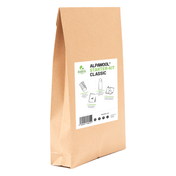The Merino sheep, which originally settled in North America, is descended from the fine-wool sheep breed. It probably owes its name to the Berber dynasty of the Merinids. In the 17th/18th century, this breed was only allowed to be bred in Spain. This gave them exclusive rights to the wool. It was called "Spanish wool" and exporting the sheep was out of the question. At the time, this was an offence punishable by death. In Spain, it achieved great economic importance due to the high quality of its wool. The breed was rarely used as a source of meat, as the coveted wool made it too valuable to eat alone. It was also said that the long distances the animals had to travel made the meat tough. It was not until the 19th century that herds of sheep spread further and today Australia is the main supplier of Merino wool. In the 18th century, the Merino sheep came to Germany, where it was crossed with regional animals. The following breeds were created in Germany: the Merino sheep, the Merino meat sheep and the Merino long wool sheep. The Merino sheep is the most common breed in Germany, accounting for 30% of the total sheep population, and in Bavaria it is almost 70%.
Details about Merino wool:
Anyone who has ever worn clothing made of merino wool knows why it is so popular. No itching or scratching, just perfect for every season. Warm in winter and cool in summer. This is due to the fibers being filled with up to 85% air. This enables an insulating and breathable effect. A merino sheep produces two to four kilograms of high-quality wool per year. In rare exceptional cases up to ten kg. However, half of the shorn material is only usable, the other half consists of dirt, sweat, grease and plant residue. Because the economic importance of merino sheep is so great, a correspondingly high price is paid for the raw material and the products made from it. Around 130 euros for a kilogram! The value and thus also the quality and price increase the finer the fiber. The corresponding thickness is measured in microns (one thousandth of a millimeter).
strong: 24 to 25 microns
medium: 22 to 23 microns
fine: 19 to 21.9 microns
superfine: 17 to 18.9 microns
ultrafine: less than 16.9 microns
Merino wool also helps regulate moisture on hot days - the fibers can absorb up to 30% of their own weight in moisture, such as sweat, and then release it again. Fortunately, merino wool doesn't smell. Cooking smells or heavy sweating don't affect the yarn - a quick airing is enough. Just like dirt, which rolls off the wool. The wool also protects against UV rays, like a 40+ sunscreen. Wrinkles, lint or the well-known electrostatic charge cannot harm the wool, except for flammability. Firefighters even protect themselves with this clothing. As you can see, merino wool has many advantages. And we haven't even talked about the typical merino shine yet. 🙂
Animal welfare – an important issue for Merinos
A method of breeding Merino sheep is often discussed, known as "mulesing". This practice causes the animals great pain, which is why animal welfare is so important. Part of the skin on the sheep's tail is removed. This prevents infestation with fly maggots, which cause a fatal disease for the animals. Mulesing is done without anesthesia and is torture. An ongoing battle between Merino suppliers and animal rights activists. At Hansa-Farm®, fair treatment of animals is very important to us. We believe: "Only mulesing-free wool feels good on the skin, without a guilty conscience." We already reported on this in 2018 in the article Baby Merino wool mulesing free.
Subscribe to our emails
Be the first to know about new collections and exclusive offers.




